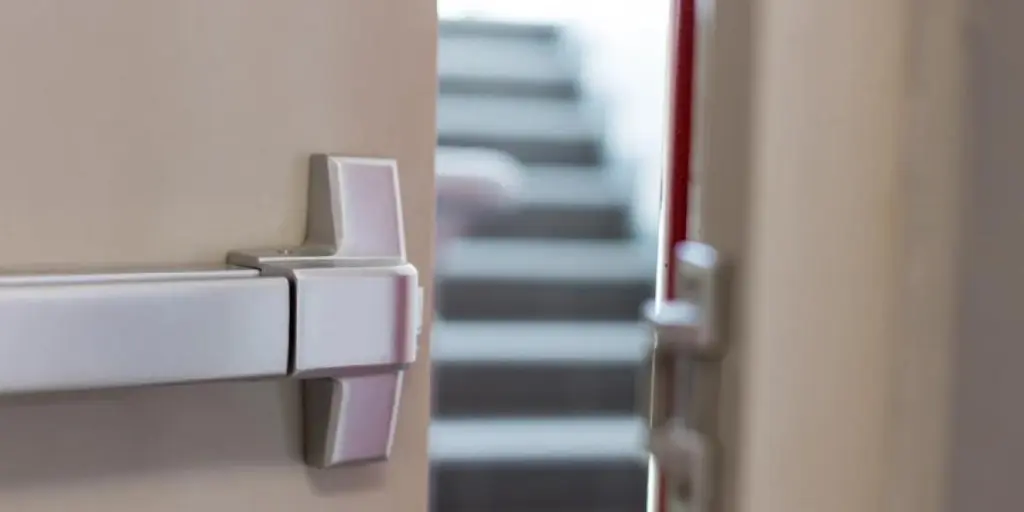Human life and safety are always major considerations in commercial buildings; fast and easy exits from emergency situations such as fires can save lives. Panic bars are hardware items that provide fast and easy exits from buildings in an emergency.
In this article, we introduce panic bars and provide advice on how to choose the right panic bar model to meet your requirements.
Table of Contents
Types of door panic bars:
What types of panic bars are available?
What are the panic bar regulations?
What materials are panic bars constructed from?
What panic bar color finishes are available?
What is the panic bar dogging feature?
What are external panic bar lever trims?
What basic factors should I consider when choosing a panic bar?
Summary
What kinds of Door Use Panic Bars?
Types of door panic bars:
It is a requirement for panic exit doors to use panic bars. Exit doors can be either single or double, and fire-rated or non-fire-rated. The door type will determine the panic bar needed. For example, a UL-listed single door would use a Rim-type UL-listed panic bar.
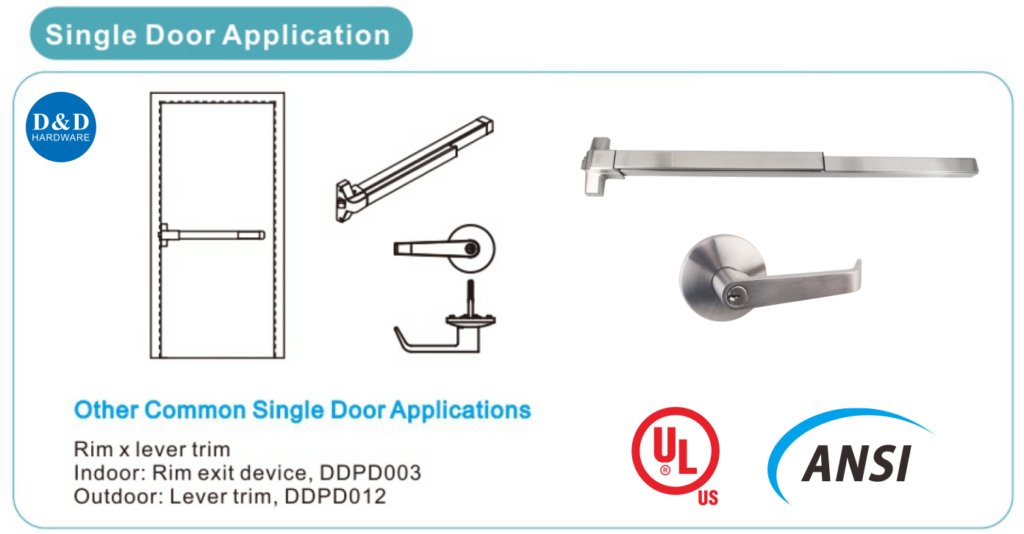
What types of panic bars are available?
There are three types of panic bars: rim, vertical rod (surface-mounted and concealed) and mortise.
- Rim: Rim panic bars are the most popular model as they are easy to install and maintain. They are surface-mounted on doors with a latch projecting onto a strike plate to keep the door shut. These rim panic bars can be used on single doors, double doors with a removable mullion, or on rebated double doors if using a vertical rod panic bar.

- Vertical Rod: Vertical rod panic bars have two-point locking (top and bottom with latches) and are more secure than rim models. They are typically used on double doors but are also suitable for single doors in locations that regularly experience high wind pressure, such as coastal areas. The installation and maintenance of vertical rod models are more complicated than rim panic bars, particularly if it is a concealed rod model.
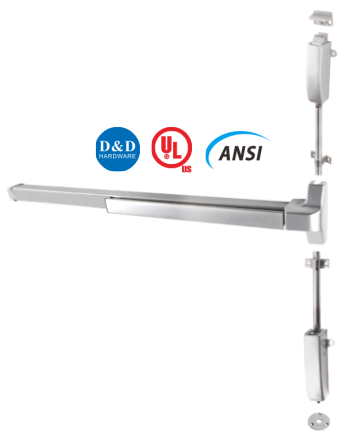
- Mortise: Mortise panic bars are less common than rim or vertical rod panic bars as they generally require doors to be pre-cut by the manufacturer. The main advantage of mortise panic bars is that there are more applications and functions available that can meet additional diverse door requirements and projects.

What are the panic bar regulations?
Panic exit doors must facilitate easy egress from the interior, therefore, panic hardware must meet the standards of the American National Standards Institute (ANSI A156.3). If it is a UL-listed door, it is also necessary to ensure that the panic bar is UL (Underwriter Laboratories) listed.
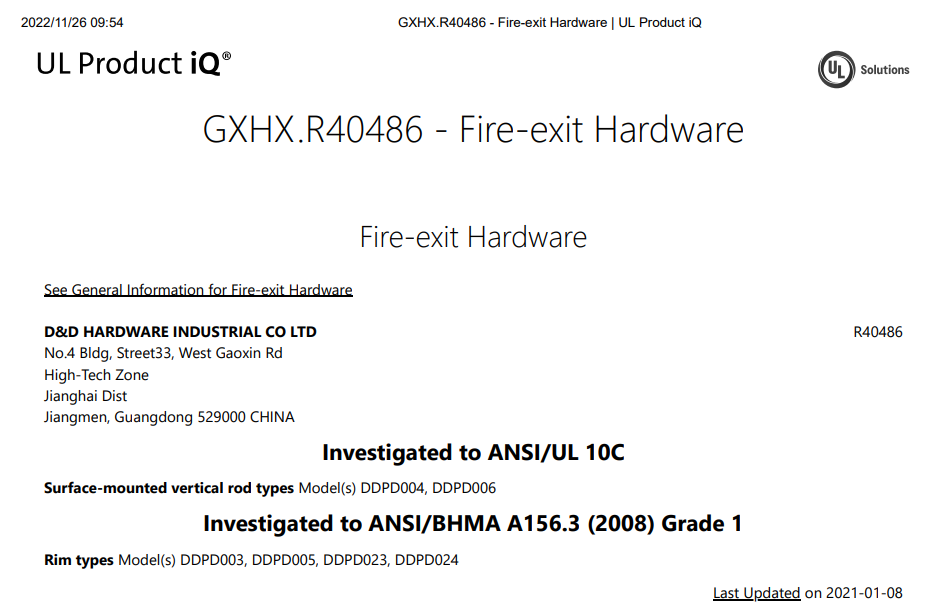
What materials are panic bars constructed from?
Panic bars are available in steel and stainless steel, either Grade 304 or Grade 316. Which you choose may depend on your budget, application location, or project requirements. In coastal areas, the use of stainless steel Grade 316 is advised.
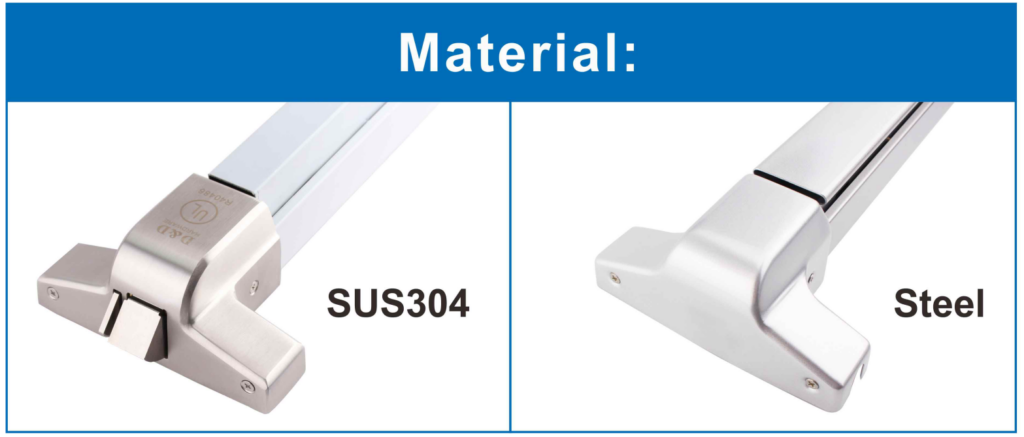
What panic bar color finishes are available?

To meet designer, door color, or aesthetic requirements, panic bars are available in several finishes, including silver, satin, matt black, and polished brass.
What is the panic bar dogging feature?
Dogging a device allows the latches to be held retracted to create a push/pull function, this can be achieved by hex dogging, a key, or a thumb turn piece. The dogging feature must not be used on fire-rated doors as fire-rated doors must be kept shut.

What are external panic bar lever trims?
External lever trims are external door locks for which access from outside is required. Different models are available, with multiple functions.

What basic factors should I consider when choosing a panic bar?
Is it a single leaf or double door?
If the panic bars are destined for use on a double door, determine whether it is a rebated latch or a non-rebated latch, and whether there is a mullion between the two leaves.
Is it a UL-listed door or non-UL-listed door?
If for a UL-listed door, UL-listed panic bars must be used, such as a UL-listed electrified rim exit device with battery.
What is the door width and height?
The door width determines the length of the panic bar and the door height determines the length of the vertical rod.
Is an external lever trim required for access from outside?
If yes, you need to take into account the required external lever trim functions and consider the door thickness when ordering external lever trims.
Summary
Panic bars provide people with fast and easy egresses from buildings and choosing the correct model will protect and save lives in emergency situations. Considering this, it is recommended to seek professional advice from consultants registered with the DHI (Door and Hardware Institute) and the GAI (Guild of Architectural Ironmongers) when choosing panic bars for your project. Remember that to create a safe panic door, it is essential to fit it with the required hardware, including inside handles and levers, outside levers and handles, lock levers, and the correct panic bars type.
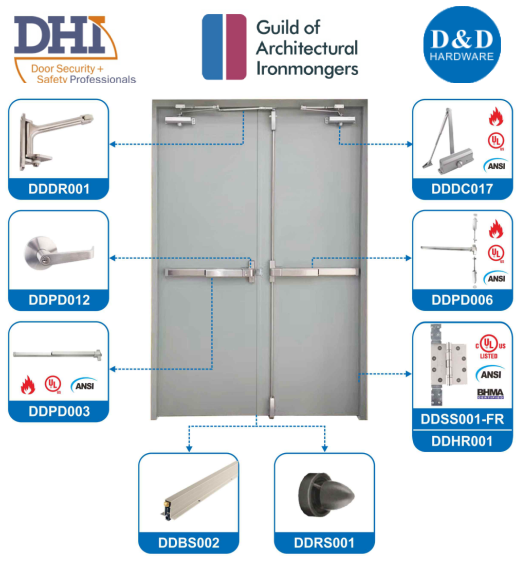
Disclaimer:The information set forth above is provided by D&D Hardware independently of Alibaba.com. Alibaba.com makes no representation and warranties as to the quality and reliability of the seller and products.
